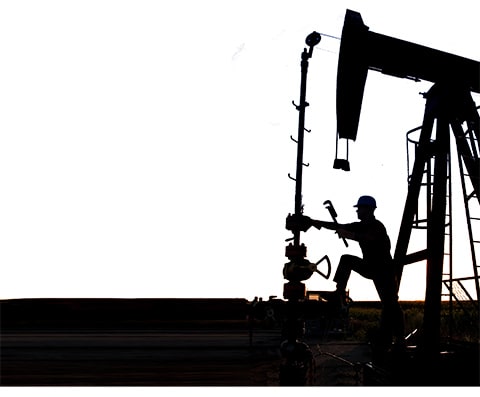FAQs - Mining Laws in Israel
Introduction
 In Israel, there are 85 active quarries and approximately 2000 non-active or abandoned quarries. All are open pit mines, extracting raw materials for the construction and road-building industries, as well as phosphates for the chemical and agricultural industries. Aspects of resource management and sustainability have been adopted in the mining sector over the last few decades, especially since the establishment of the Ministry of Environmental Protection and the formulation of the National Master Plan for Mining and Quarrying, approved in stages between 1998 and 2001The National Master Plan for Mining and Quarrying is currently undergoing a thorough revision to implement new techniques for mining sector sustainability. Furthermore, many of the non-operational quarries are in various stages of recovery preparation or are being rehabilitated by the Quarry Rehabilitation Fund (QRF).
In Israel, there are 85 active quarries and approximately 2000 non-active or abandoned quarries. All are open pit mines, extracting raw materials for the construction and road-building industries, as well as phosphates for the chemical and agricultural industries. Aspects of resource management and sustainability have been adopted in the mining sector over the last few decades, especially since the establishment of the Ministry of Environmental Protection and the formulation of the National Master Plan for Mining and Quarrying, approved in stages between 1998 and 2001The National Master Plan for Mining and Quarrying is currently undergoing a thorough revision to implement new techniques for mining sector sustainability. Furthermore, many of the non-operational quarries are in various stages of recovery preparation or are being rehabilitated by the Quarry Rehabilitation Fund (QRF).
Q1. What are the laws that regulate the mining in Israel?
The main rules and regulations that deal with mining codes are
- The Mining Ordinance of 1925 and ensuring 1973 and 1978 regulations
- The Spatial planning
The Mining Ordinance of 1925 and ensuring 1973 and 1978 regulations-this statute lays down the conditions and parameters for getting a mining permit. In 1978 the establishment of the Quarry Rehabilitation Fund that oversees the restoration of non-active quarries.
The Spatial Planning- Approved mining and quarrying sites are included in the National Master Plan for Mining and Quarrying (Plan 14). Plan 14 governs the extraction of natural resources with the aim of maintaining reserves until 2020.Plan 14 also includes instructions for site reconstruction, noise nuisances, and air quality. Pollution, water degradation, and environmental impact criteria evaluation.
Q2. Who is responsible for monitoring the mining industry?
The monitoring of the mines are regulated by five tiers
- Local Authority- For mining sites within its jurisdiction, the local government issues an annual business license. The mining conduct and environmental standards are specified in the business license. Mines and quarries that do not follow the terms of their license are forced to close.
- Regional Planning Commission- The regional planning commission oversees the implementation of the approved mining plan's conditions. Mining operations are halted when mines fail to comply with their land use planning requirements
- The Israel Land Administration- this enforces the payment of royalties to the government
- The Ministry of Environmental Protection- The Ministry of Environmental Protection ensures that legal environmental requirements are followed, including air pollution, noise nuisances, vibrations, and so on. The Green Police and the Israel Police Environmental Unit are the Ministry's two primary inspection bodies.
- The Ministry for national infrastructure- Mining operation is controlled by the Commission, which is part of the Ministry of National Infrastructure. The Israel Land Administration and the Ministry of Environmental Protection collaborate with the Mining Commission. The Mining Commission compares aerial photographs of mining sites with the approved mining plan twice a year. Misconduct on the part of the mining company may result in the mine being shut down.
Q3. What are the updates in the National Master Plan for Mining and Quarrying?
In July of 2005 the planning board and building board decided to update the National Master Plan for Mining and Quarrying (Plan 14b) based on anticipated needs in 2040. This update incorporates a detailed new approach to environmental issues and long-term sustainability. The draft Plan 14 revision aims to "ensure the mining supplies of raw materials for the building and road construction industries up to the year 2040, thus adhering to sustainable development principles."
Q4. What are the recommendations made in Plan 14b?
Plan 14b has made six recommendations in total which are,
- Ensuring the needs of the future generations for raw materials
- Minimizing the environmental as well as the health effects of mining activities
- Balancing between development and the need to save and preserve our resources
- Land reserves are wisely used to ensure the supply of raw materials for the construction and road-building industries.
- Raw material consumption that is wise and effective, as well as demand and supply management
- Balancing national economic gains with local negative consequences, such as environmental consequences for local communities
Q5. Are the Israel guidelines different for small, medium and artisanal mining?
No, the guidelines are uniform no matter the mining size.
Q6. What is the role of EIA in mining in Israel?
 Environmental impact assessment (EIA) regulations have been incorporated into Israel's planning system, requiring reviews for any projects that are likely to have environmental consequences. The regulations provide guidelines for the preparation of EIAs and enable the Ministry of Environmental Protection to review them. The original regulations were broadened in 2003 to include sustainable development standards such as soil, water, and energy conservation and to require EIAs in environmentally sensitive areas such as coasts and riverbanks.
Environmental impact assessment (EIA) regulations have been incorporated into Israel's planning system, requiring reviews for any projects that are likely to have environmental consequences. The regulations provide guidelines for the preparation of EIAs and enable the Ministry of Environmental Protection to review them. The original regulations were broadened in 2003 to include sustainable development standards such as soil, water, and energy conservation and to require EIAs in environmentally sensitive areas such as coasts and riverbanks.
Q7. Is there any public participation in the decision making when it comes to mining?
The approval of local and regional planning committees is needed for new mining operations within existing mines. All proposed proposals must be announced and open to public scrutiny and opposition, according to Israel's Planning and Building Law. Each planning committee also involves an elected official who is not affiliated with the local or national government. In addition, stakeholder consultation and public engagement were used in the creation of the updated National Master Plan for Mining and Quarrying (Plan 14b).The plan is being developed in collaboration with all related ministries, organisations, and civic associations, and it is planned that specifics of the proposed plan will be presented to the public before it is advanced to the stage of legislative approval. At the point of evaluating alternatives to the legislative plan, a public hearing is required.
Q8. What is the level of transparency in the mining sector?
The Freedom of Information Act of 1998 mandates that all levels of mining governance offer requested information to any citizen. The Ministry of the Environment, as well as the Ministry of National Infrastructure, are in charge of environmental protection. The Israel Land Administration and the National Planning and Building Board also have extensive websites with a wealth of knowledge on mining operations, spatial planning, mine location, legislation, and annual site restoration reports.
Q9. How are the risk assessments of the mining activities conducted?
Mine risk assessments are carried out within the context of environmental impact assessments. Permanent vibration sensors are mounted and tracked in areas where the impact of explosions on nearby populations are unknown.
Q10. What regulatory body takes care of the safety and health of the people working in mines?
The Ministry of Industry, Trade, and Labor is in charge of all aspects of mining worker protection and health. The Work Safety Ordinance (Stone Mining) 1965, the Safety at Work Ordinance 1970, and the Use of Explosives Regulations 1994 govern mining activities. These regulatory bodies lay down the conditions for-
- Site mapping
- Use of explosives
- Use of safety equipment
- Periodic health inspection of the workers
Q11. What steps are taken to minimize the health effects of these mining activities?
Some of the steps that have been initiated to protect the health of the people are--
- Prohibiting new mines in highly populated areas and in proximity to localities
- Incorporating transportation issues into modern mining operations. It is proposed that raw material transportation by rail be increased in order to minimize air pollution, traffic congestion, and greenhouse gas emissions. Mining operations are thought to account for about 30% of all road cargo transport in Israel.
- Setting up a more strict enforcement and inspection regime to ensure quarries adhere to environmental and mining regulations.
Q12. What steps have been taken to minimize the environmental effects of mining?
- To address the problem of long-term licensing during which environmental standards can change, mines should be required to comply with updated standards by using best available technology (BAT).
- Setting up a more strict enforcement and inspection regime to ensure quarries conform to environmental and mining regulations.
- Relocating raw material processing equipment from mine outskirts to the center of the quarry, in a topographically low area, to minimize air pollution and other hazards associated with mineral processing activities.
- Incorporating transportation issues into modern mining operations. It is proposed that raw material transportation by rail be increased in order to minimize air pollution, traffic congestion, and greenhouse gas emissions. Mining operations are thought to account for about 30% of all road cargo transport in Israel.
Q13. Is there an Emergency Response Plan set in place?
There are no underground mines in Israel, and all mining operations are carried out in open areas with a low risk factor. Every mine's business license specifies the conditions for site safety and emergency response.
Q14. What is the role of QRF in the mining sector?
The Quarry Rehabilitation Fund was established in 1978 as a result of the Mining Ordinance (1925) regulations. It is in charge of managing the rehabilitation of quarries that are no longer in use. In Israel, there are approximately 2000 abandoned quarries. The QRF is governed by an eight-member board that includes representatives from the Ministry of the Environment, Israel Land Administration, Nature and Parks Authority, and Ministry of National Infrastructure.
The QRF is responsible for the following-
- To claim back a fee from the mining firm. The fee is calculated as a percentage of the overall selling price of the resource which can be as low as 0.1 percent for cement or lime and as high as 6% for natural soil.
- To promote the site rehabilitation plan.
- To fund and supervise all the phases of site rehabilitation.
 The QRF maintains a NIS 300 million ($75 million) endowment, with an estimated annual investment of over NIS 16-17 million (roughly $4 million). The QRF has already completed or partially completed 230 projects and manages 50 ongoing restoration plans each year. Quarry restoration plans include a range of programs, including turning old quarries into regional parks and playgrounds reservoirs, open-air theaters, industrial areas, multi-level cemeteries, and other facilities.
The QRF maintains a NIS 300 million ($75 million) endowment, with an estimated annual investment of over NIS 16-17 million (roughly $4 million). The QRF has already completed or partially completed 230 projects and manages 50 ongoing restoration plans each year. Quarry restoration plans include a range of programs, including turning old quarries into regional parks and playgrounds reservoirs, open-air theaters, industrial areas, multi-level cemeteries, and other facilities.
 Русский
Русский
 English
English 官话
官话 português
português عربي
عربي
 Türk
Türk 






.jpg)



















